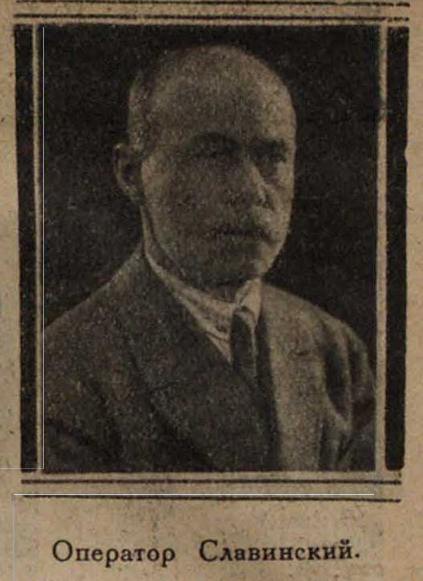Yevgenii Slavinskii
(1877-1950)

Yevgenii Slavinskii was a Russian Soviet cameraman and director.
He was born on 24 January 1877.
He graduates from the Naval Medical School, after which he serves on ships of the Imperial Russian Navy. He become interested in photography and cinema, therefore, decides to change his profession. From 1908, he workes as a correspondent for the Moscow branch of the Pathé Brothers Company, filming the Northwestern Territory of the Russian Empire. From 1912, he workes as a cameraman of documentary films in Moscow. In 1914, he moves to Yermolev’s Film Studio, where he shot feature films. From 1917-1918, he workes in Neptun Film Studio.
In 1919-1920, he serves in the Red Army. After demobilization, Slavinskii comes to work in Ukraine, where he makes a number of films, such as the first feature film of VUFKU’s Odesa Film Studio Swedish Match (1922), the educational film For Black Gold (1924), and three movies with Vladimir Gardin (A Landlord (1923), Locksmith and Chancellor (1924), Ostap Bandura (1924)).
In 1925, Slavinskii was sent to Rostov-on-Don to Yuvkinokomsomol Film Studio. Later, he moves to Moscow to Sovkino Film Studio, where he shots feature and documentary films. After World War II, he works as a cameraman at Mosfilm Studio and also teaches a shooting technique course at VGIK.
Yevgenii Slavinskii was one of the first to use some special camera techniques. For the film The Queen of Spades (1916), he used an agile camera, an above angle, and special lighting for showing night scenes. Moreover, in the film Prisoners of the Sea (1928), he was the first in the USSR to take underwater shots from a diving bell.
He died on 23 September 1950 in Moscow.